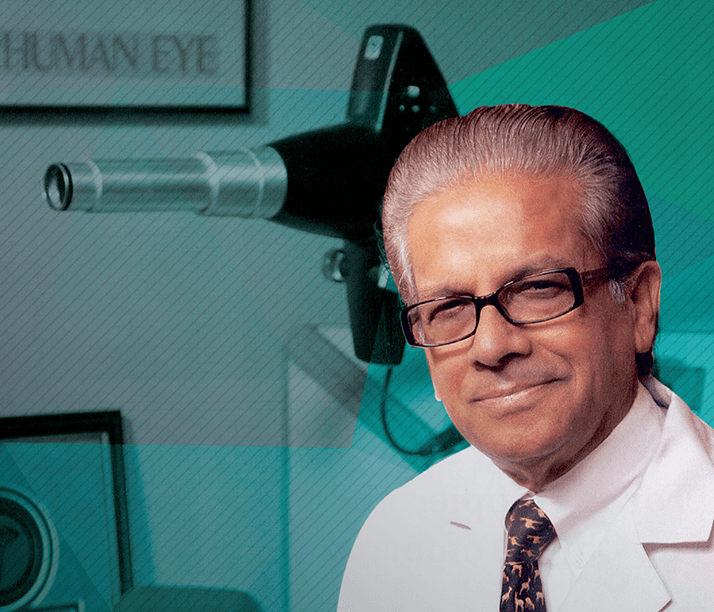
India is a rapidly developing country, but there’s a massive rural population with unmet eye care needs. How can they be helped? India is a highly developed country in some respects – if I began my ophthalmology training now, the education in India is so good that I could have done it there. But in other respects, it still has the problems of a developing country. We can send a mission to Mars, but rural areas still have a lot basic health problems. While living in the United States, I went to India on holiday and a farmer came to show me his eyes. I didn’t have any instruments with me, so I was like a fish out of water; that’s what prompted me to start my first “eye care camp” in 1977. The World Bank once said that the most cost-effective intervention in the world is combating childhood blindness; children’s vision is a passion of mine, so as the eye camps expanded, we concentrated on children. We established a continuous vision screening program in schools – we train teachers to screen students so that we can catch refractive errors in time. Otherwise, people think that children aren’t paying attention – but what’s really happening is that they can’t see the blackboard, so they don’t understand the lessons. The future of our world relies on us taking care of children. There are so many conditions that cause blindness in childhood; we can deal with them now that we have technology that wasn’t there 30 or 40 years ago. We recently bought a retinal imager that allows us to identify the easily treatable condition, retinopathy of prematurity. The most satisfying aspect of what we do is giving children back their vision thanks to early diagnosis and treatment.
What made you form the Eye Foundation of America? I formed the Eye Foundation of America (EFA) in 1982 to get funding and to send instruments to India. Border control was so rigid in the late 1970s that I was having a tough time getting surgical instruments out there. We couldn’t perform cataract surgery on children using the same methods we would use on an adult, so we aspirated the cataracts through a small needle. We could do it without a large incision, but we also needed to remove a little of the vitreous to avoid problems after surgery – so I needed vitrectomy instruments. I was told it would be easier to bring them into India if I started a foundation for charitable work. That’s how the EFA began, I’d never considered fundraising, but my daughter started that 20 years later! Meanwhile, I’d spent over US$1 million of my own money on the foundation. Things are very different today; a lot of patients and friends now help us financially.
It’s interesting. Here in America, patients pay me for LASIK surgery in order to get rid of their glasses – and that money goes to the EFA. One procedure means that 30 to 40 children elsewhere in the world get glasses! One big issue in India is that many people don’t know that children can be born with cataracts. In many places in rural India, there are some non-ophthalmologist doctors who think, “We mustn’t operate on such a small baby,” not realizing the consequence is that the untreated child will soon lose their vision forever. It’s a matter of education. That’s why educating doctors, policy makers, and the public with outreach programs is so important. My mentor in London used to say, “Raj, there are three solutions to every problem. The first is education, the second is education and the third is education.”
Do you see parallels between the underserved areas of the US and India? The expectations of people in the United States are very different from those in India and other countries. They don’t want to wait in line; they want the best treatment straight away. But I don’t think it is right, when the United States is one of the richest countries in the world, that anyone should be without insurance. Nobody should ever be denied healthcare. Many of the inexpensive instruments and techniques developed for eye care screening and surgery in developing countries could be used in the United States as well, but I fear that can’t happen until the legal system is… more balanced. Nevertheless, there are physician exchange programs between the United States and India, where doctors from America can observe how things are done in developing areas and learn to provide eye care – and health care in general – in a less expensive way. So many doctors in underserved areas are very innovative, and learning those methods is good for both sides. In the last 35 years, there’ve been more than 40 major medical breakthroughs, but the technological advancements can be expensive – so I think education, prevention and early diagnosis will help to keep costs down. But ultimately, developing countries’ outreach programs are the answer to combat childhood avoidable blindness.
